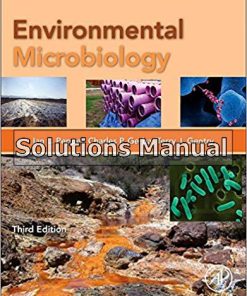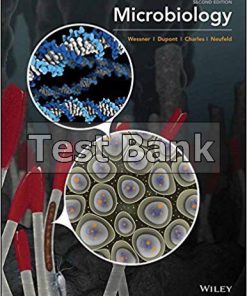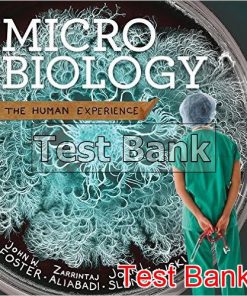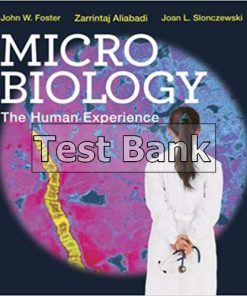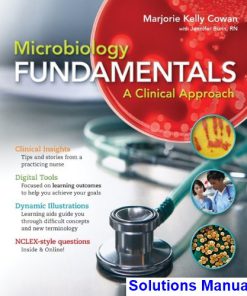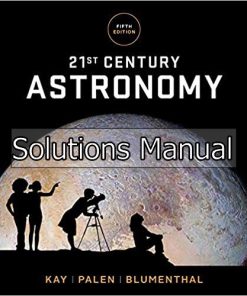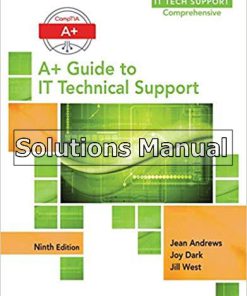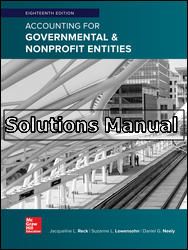Microbiology 1st Edition Wessner Solutions Manual
You may also like
-
$26.50
$50.00 -
$26.50
$50.00
Microbiology 1st Edition Wessner Solutions Manual
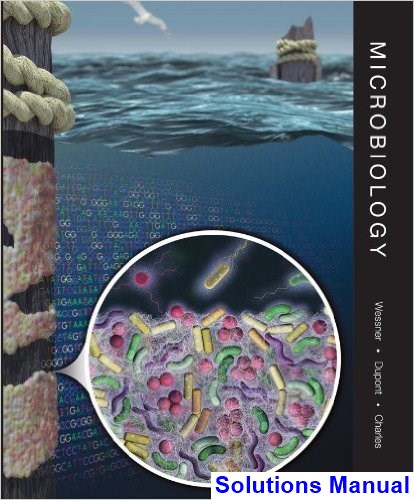
Product details:
- ISBN: 0471694347
- ISBN-13: 9780471694342
- Authors: David Wessner, Dave Wessner, Christine DuPont, Trevor Charles
Table contents:
PART 1 THE MICROBES
1 The Microbial World 2
1.1 The Microbes 4
1.2 Microbial Genetics 16
1.3 Microbial Metabolism and Ecology 24
1.4 Microbes and Disease 27
2 Bacteria 36
2.1 Morphology of Bacterial Cells 38
2.2 The Cytoplasm 41
2.3 The Bacterial Cytoskeleton 44
2.4 The Cell Envelope 45
2.5 The Bacterial Cell Surface 62
2.6 Bacterial Taxonomy 68
3 Eukaryal Microbes 72
3.1 The Morphology of Typical Eukaryal Cells 74
3.2 Diversity of Eukaryal Microbes 87
3.3 Replication of Eukaryal Microbes 92
3.4 The Origin of Eukaryal Cells 95
3.5 Interactions Between Eukaryal Microbes and Animals, Plants, and the Environment 100
4 Archaea 106
4.1 Distinct Properites of Archaea 108
4.2 Archaeal Cell Structure 110
4.3 Diversity of Archaea 119
5 Viruses 130
5.1 A Basic Overview of Viruses 132
5.2 Origins of Viruses 140
5.3 Cultivation, Purification, and Quantification of Viruses 142
5.4 Diversity of Viruses 149
5.5 Virus-Like Particles 155
5.6 Virology Today 157
6 Cultivating Microorganisms 164
6.1 Nutritional Requirements of Microorganisms 166
6.2 Factors Affecting Microbial Growth 168
6.3 Growing Microorganisms in the Laboratory 173
6.4 Measuring Microbial Population Growth 184
6.5 Eliminating Microbes and Preventing Their Growth 192
PART II MICROBIAL GENETICS
7 DNA Replication and Gene Expression 202
7.1 The Role of DNA 204
7.2 DNA Replication 210
7.3 Transcription 216
7.4 Translation 233
7.5 The Effects of Mutations 229
8 Viral Replication Strategies 238
8.1 Recognition of Host Cells 240
8.2 Viral Entry and Uncoating 244
8.3 Viral Replication 248
8.4 Viral Assembly and Egress 256
8.5 Antiviral Drugs 258
9 Bacterial Genetic Analysis 266
9.1 Bacteria as Subjects of Genetic Research 268
9.2 Mutations, Mutants, and Strains 271
9.3 Restriction Enzymes, Vectors, and Cloning 278
9.4 Recombination and DNA Transfer 285
10 Microbial Genomics 302
10.1 Genome Sequencing 304
10.2 Genomic Analysis of Gene Expression 312
10.3 Comparative Genomics 318
10.4 Metagenomics 323
11 Regulation of Gene Expression 328
11.1 Differential Gene Expression 330
11.2 The Operon 332
11.3 Global Gene Regulation 337
11.4 Post-Initiation of Gene Expression 346
11.5 Quorum Sensing 350
11.6 Two-Component Regulatory Systems 352
11.7 Chemotaxis 355
12 Microbial Biotechnology 362
12.1 Microbes for Biotechnology 365
12.2 Molecular Genetic Modification 368
12.3 Red Biotechnology 381
12.4 White Biotechnology 382
12.5 Green Biotechnology 391
PART III MICROBIAL PHYSIOLOGY AND ECOLOGY
13 Metabolism 400
13.1 Energy, Enzymes, and ATP 402
13.2 Central Processes in ATP Synthesis 406
13.3 Carbon Utilization in Microorganisms 412
13.4 Respiration and the Electron Transport System 422
13.5 Metabolism of Non-Glucose Carbon Sources 429
13.6 Phototrophy and Photosynthesis 433
13.7 Nitrogen and Sulfur Metabolism 443
13.8 Biosynthesis of Cellular Components 447
14 Biogeochemical Cycles 456
14.1 Nutrient Cycling 459
14.2 Cycling Driven by Carbon Metabolism 463
14.3 Cycling Driven by Nitrogen Metabolism 472
14.4 The Interconnectedness of Cycles 478
15 Microbial Ecosystems 484
15.1 Microbes in the Environment 486
15.2 Microbial Community Structure 490
15.3 Aquatic Ecosystems 498
15.4 Terrestrial Ecosystems 406
15.5 Deep Subsurface and Geothermal Ecosystems 512
16 The Microbiology of Food and Water 522
16.1 Food Spoilage 524
16.2 Food Preservation 528
16.3 Food Fermentation 534
16.4 Foodborne and Waterborne Illness 541
16.5 Microbiological Aspects of Water Quality 543
17 Microbial Symbionts 560
17.1 Types of Microbe–Host Interactions 563
17.2 Symbionts of Plants 564
17.3 Lichens 569
17.4 Symbionts of Vertebrates 571
17.5 Symbionts of Invertebrates 587
PART IV MICROBES AND DISEASE
18 Introduction to Infectious Diseases 600
18.1 Pathogenic Microbes 603
18.2 Virulence Strategies 608
18.3 The Transmission of Infectious Diseases 613
18.4 Proving Cause and Effect in Microbial Infections 621
18.5 The Evolution of Pathogens 625
19 Innate Host Defenses Against Microbial Invasion 636
19.1 Immunity 638
19.2 Barriers to Infection 639
19.3 The Inflammatory Response 643
19.4 The Molecules of Innate Immunity 644
19.5 The Cells of Innate Immunity 653
19.6 Invertebrate Defenses 663
20 Adaptive Immunity 672
20.1 Features of Adaptive Immunity 674
20.2 T Cells 677
20.3 Antigen Processing 681
20.4 Antigen-Presenting Cells 686
20.5 Humoral and Cell-Mediated
20.6 B Cells and the Production of Antibody 694
21.2 Survival in the Host:
Strategies and Consequences 743
Toolbox 21.2 THE TUBERCULIN TEST FOR TUBERCULOSIS 750
21.3 Evolution of Bacterial Pathogens 751
22 Viral Pathogenesis 760
22.1 Recurring Themes in Viral Pathogenesis 762
22.2 Interactions with the Host: Strategies and Consequences 770
22.3 Viral Infections and Cancer 775
22.4 Evolution of Viral Pathogens 785
23 Eukaryal Microbe Pathogenesis 792
23.1 Mechanisms of Eukaryal Microbe Pathogenesis 794
23.2 Pathogen Study:
23.3 Macroscopic Eukaryal Pathogens 814
23.4 Evolution of Eukaryal Pathogens 816
24 Control of Infectious Diseases 822
24.1 Historical Aspects of Infectious Disease Treatment and Control 824
24.2 Antimicrobial Drugs 825
24.3 Antimicrobial Drug Resistance 836
24.4 Predicting and Controlling Epidemics 850
24.5 Immunization and Vaccines 853
People also search:
father of microbiology

